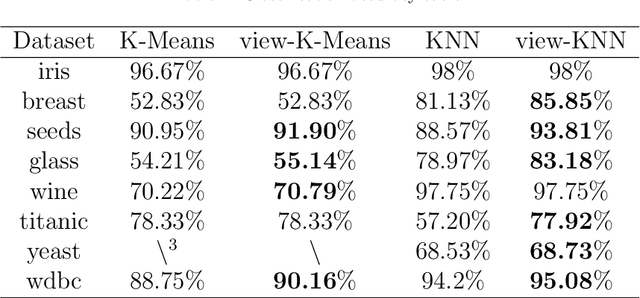Houbiao Li
Attribute reduction algorithm of rough sets based on spatial optimization
May 15, 2024Abstract:Rough set is one of the important methods for rule acquisition and attribute reduction. The current goal of rough set attribute reduction focuses more on minimizing the number of reduced attributes, but ignores the spatial similarity between reduced and decision attributes, which may lead to problems such as increased number of rules and limited generality. In this paper, a rough set attribute reduction algorithm based on spatial optimization is proposed. By introducing the concept of spatial similarity, to find the reduction with the highest spatial similarity, so that the spatial similarity between reduction and decision attributes is higher, and more concise and widespread rules are obtained. In addition, a comparative experiment with the traditional rough set attribute reduction algorithms is designed to prove the effectiveness of the rough set attribute reduction algorithm based on spatial optimization, which has made significant improvements on many datasets.
A new distance measurement and its application in K-Means Algorithm
Jun 10, 2022



Abstract:K-Means clustering algorithm is one of the most commonly used clustering algorithms because of its simplicity and efficiency. K-Means clustering algorithm based on Euclidean distance only pays attention to the linear distance between samples, but ignores the overall distribution structure of the dataset (i.e. the fluid structure of dataset). Since it is difficult to describe the internal structure of two data points by Euclidean distance in high-dimensional data space, we propose a new distance measurement, namely, view-distance, and apply it to the K-Means algorithm. On the classical manifold learning datasets, S-curve and Swiss roll datasets, not only this new distance can cluster the data according to the structure of the data itself, but also the boundaries between categories are neat dividing lines. Moreover, we also tested the classification accuracy and clustering effect of the K-Means algorithm based on view-distance on some real-world datasets. The experimental results show that, on most datasets, the K-Means algorithm based on view-distance has a certain degree of improvement in classification accuracy and clustering effect.
 Add to Chrome
Add to Chrome Add to Firefox
Add to Firefox Add to Edge
Add to Edge